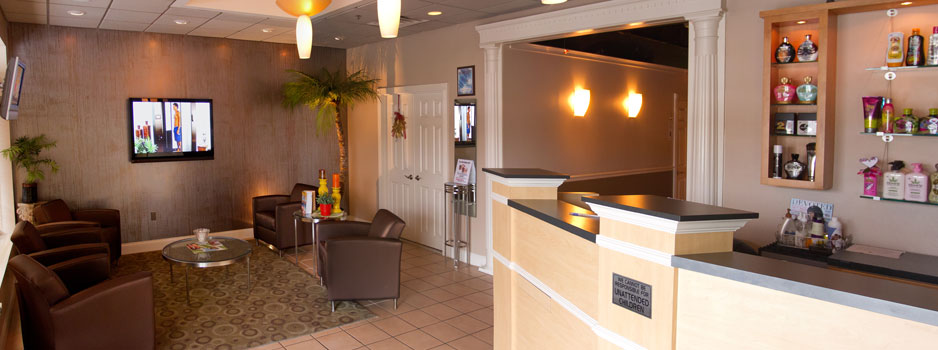Dermotologists Use ‘Medically Necessary’ UV?
The American Academy of Dermatology Association defends its usage of sunbeds for the treatment of psoriasis as “medically necessary” UV exposure, denying that dermatology phototherapy competes with indoor tanning and creating an interesting contradiction in the group’s campaign to ban indoor tanning for those under 18 years of age.
“We are not competitors with the tanning industry,” Idaho Dermatology Society President Lindsay D. Sewell said in AADA’s press release, denying that dermatology has a conflict-of-interest in lobbying for the regulation of a competitor. Sewell and AADA have asked that sunbed usage be banned for those under 18, but that teenagers be allowed to use sunbeds in dermatology offices for phototherapy. “We are specially trained to treat skin conditions with medically necessary UV radiation.”
AADA’s statement was a response to the Idaho Freedom Foundation’s objections to AADA lobbying — objections which led to the Idaho House of Representatives delaying action on House Bill 486, which would ban salon tanning for those under 18 if enacted.
In their press release, AADA and Sewell did not disclose that both the U.S. Department of Health and Human Services and the World Health Organization classify phototherapy as a Group 1 Carcinogen. In once study cited by the U.S. government, dermatology phototherapy was associated with a 50-fold (5,000 percent) increase in skin cancer risk — a 66-times greater relative risk than dermatology (falsely) alleges for indoor tanning sunbeds (75 percent).
Sewell claimed in AADA’s press release that derms use “a lesser amount of ultraviolet light than tanning beds” in phototherapy treatments. But published phototherapy standards often refer to dermatology protocol as intentionally inducing a sunburn in phototherapy treatments and that blistering sunburns are a potential side effect. North American indoor tanning sunbeds, in contrast, deliver no more than three-quarters of what would induce a sunburn — conservative exposure schedules developed by the U.S. Food and Drug Administration in cooperation with the indoor tanning industry.
An estimated 1.5 million indoor tanning clients tan primarily to informally treat psoriasis — a side-effect many achieve by following indoor tanning’s cosmetic tanning guidelines. Salons do not market the service as therapeutic — any perceived treatment is a side effect. Many who have used phototherapy devices in dermatology offices have said that derms use less precautions to prevent sunburns than indoor tanning salons do.
In fact, many patients are referred to tanning salons instead by physicians, as the cost of a tanning session is almost always less expensive than the health insurance co-payment of a dermatology-based phototherapy session. As a result, the number of phototherapy treatments by dermatologists has plummeted. In 1993 dermatologists administered 873,000 visits for phototherapy sessions. By 1998, that number dropped by 94 percent according to the Journal of the American Academy of Dermatology, which in 2002 described phototherapy sessions as “a safe and effective treatment for psoriasis.”
“If any UV exposure were as dangerous as a recent statement from the AAD claims, then dermatologists would be guilty of violating their Hippocratic oath for using UV in what they describe as burning dosages to treat purely cosmetic skin conditions,” said Smart Tan Vice President Joseph Levy. “Professional tanning facilities are trained to deliver non-burning dosages of UV light to create a cosmetic tan, but a side effect is that people are treating all sorts of conditions informally and effectively. What we’re really seeing is dermatology’s anger for the loss of billions of dollars in phototherapy treatments in their offices, as consumers choose a more economical and convenient method of self-care.”
Professional indoor tanning facilities promote a balanced message about UV exposure — acknowledging the risks of overexposure. In contrast, AAD continues to mislead the public by suggesting in its statements that any UV exposure causes melanoma, which completely misrepresents the science. “This has never been a health care debate,” said Levy. “This is the cosmetic dermatology industry attacking indoor tanning as a competitor. If they thought any UV was harmful, they would not use it at all themselves to treat cosmetic conditions.”
The AAD has come under fire from within its ranks for its position on melanoma. In 2008, Dr. Bernard Ackerman — a pioneer in dermatology pathology recognized as a Master Dermatologist by AAD — backed up Smart Tan’s position about the complex relationship between UV and melanoma in the Dermatology Times stating, “There is no compelling evidence that sun tan parlors have induced a single melanoma,” and that any regulation of the tanning market “…should be predicated on evidence and not on accusation.”
In fact, AAD spokesperson Dr. James Spencer admitted in a May 2008 article in Dermatology Times that, “We don’t have direct experimental evidence,” referring to the fact that research has not shown a causative mechanism between indoor tanning and melanoma. The studies the AAD has referred to do not show causation — only weak correlations that are confounded by study design. The organization continues to omit refuting evidence and studies and the fact that most studies don’t show a correlation.
Further, while AAD is lobbying to restrict indoor tanning, its lobbying efforts have always called for phototherapy treatment in dermatology offices to be exempted from further restriction.
“It’s time that researchers and the media start asking tough questions about why dermatologists refuse to talk about these issues and their real motivations around their attacks on indoor tanning,” Levy said.

